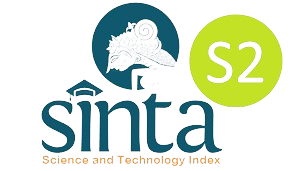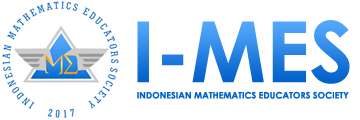Mapping cognitive load profiles in realistic mathematics education: A study with aerospace engineering students
DOI:
https://doi.org/10.29408/jel.v11i4.32104Keywords:
aerospace engineering, cognitive load theory, engineering mathematics, mental effort, realistic mathematics educationAbstract
Although Realistic Mathematics Education (RME) promotes deeper conceptual learning, empirical evidence mapping different types of cognitive loads in university engineering mathematics is limited. This mixed-methods study profiled intrinsic, extraneous, and germane cognitive loads among 76 first-year aeronautical engineering students working on RME-based task, a contextualized double integral problems modelling aircraft wing surface. We measured load components with a CLT questionnaire that adapted from Leppink et.al and mental effort with the Paas scale, then triangulated findings with student reflections and observations. Correlations showed intrinsic and germane load related to students’ mental effort, while extraneous load was minimal, suggesting clear task design. Multiple regression analysis clarified that the germane load was the main unique predictor of mental effort, whereas intrinsic complexity and extraneous factors contributed little uniquely. Qualitative data confirmed that students used strategies such as breaking tasks into sub-steps, activating prior knowledge, and peer explanation to manage effort. We propose an RME–CLT alignment framework that scaffolds intrinsic difficulty, minimizes extraneous processing, and cultivates germane engagement through reflective context-rich tasks. The findings also inform the design of cognitively efficient engineering-mathematics curricula. Thus, it offers practical guidance for designing cognitively efficient engineering mathematics instruction and recommends future studies using longitudinal and real-time measures.
References
Aditomo, A. (2014). Cognitive load theory and mathematics learning: A. Systematic Review, 24(June), 207–217.
Du, X., Dai, M., Tang, H., Hung, J. L., Li, H., & Zheng, J. (2023). A multimodal analysis of college students’ collaborative problem solving in virtual experimentation activities: a perspective of cognitive load. Journal of Computing in Higher Education, 35(2), 272–295. https://doi.org/10.1007/s12528-022-09311-8
Goold, E., & Devitt, F. (2020). The role of mathematics in engineering practice and in the formation of engineers. Proceedings of the 40th SEFI Annual Conference 2020 - Engineering Education 2020: Meet the Future, 1(June).
Gravemeijer, K. (1994). Educational development and developmental research in mathematics education. Journal for Research in Mathematics Education, 25(5), 443–471. https://doi.org/10.2307/749485
Gravemeijer, K., & Doorman, M. (1999). Context problems in realistic mathematics education: A calculus course as an example. Educational Studies in Mathematics ·. https://doi.org/10.1023/A
Greenberg, K., & Zheng, R. (2023). Revisiting the debate on germane cognitive load versus germane resources. Journal of Cognitive Psychology, 35(3), 295–314. https://doi.org/10.1080/20445911.2022.2159416
Gupta, U., & Zheng, R. Z. (2020). Cognitive load in solving mathematics problems: Validating the role of motivation and the interaction among prior knowledge, worked examples, and task difficulty. European Journal of STEM Education, 5(1), 1–14. https://doi.org/10.20897/ejsteme/9252
Jong, T. (2010). Cognitive load theory, educational research, and instructional design: Some food for thought. Instructional Science, 38(2), 105–134. https://doi.org/10.1007/s11251-009-9110-0
Juandi, D., Kusumah, Y. S., & Tamur, M. (2022). A meta-analysis of the last two decades of realistic mathematics education approaches. International Journal of Instruction, 15(1), 381–400. https://doi.org/10.29333/iji.2022.15122a
Kalyuga, S. (2006). Instructing and testing for expertise: A cognitive load perspective. Advances in Psychology Research, 46, 75–127.
Kalyuga, S. (2007). Expertise reversal effect and its implications for learner-tailored instruction. Educational Psychology Review, 19(4), 509–539. https://doi.org/10.1007/s10648-007-9054-3
Klepsch, M., & Seufert, T. (2020). Understanding instructional design effects by differentiated measurement of intrinsic, extraneous, and germane cognitive load. Instructional Science, 48(ue 1)). https://doi.org/10.1007/s11251-020-09502-9
Leppink, J., Paas, F., Vleuten, C. P. M., Gog, T., & Merriënboer, J. J. G. (2013). Development of an instrument for measuring different types of cognitive load. Behavior Research Methods, 45(4), 1058–1072. https://doi.org/10.3758/s13428-013-0334-1
Mayer, R. E., & Moreno, R. M. (2016). Nine ways to reduce cognitive load in multimedia learning. Educational Psychologist: A, 38(1), 43–52. https://doi.org/10.4324/9780203764770-6
Orru, G., & Longo, L. (2019). The evolution of cognitive load theory and the measurement of its intrinsic, extraneous and germane loads: A review. Communications in Computer and Information Science, 1012(February), 23–48. https://doi.org/10.1007/978-3-030-14273-5_3
Paas, F. G., Merriënboer, J. J., & Adam, J. J. (1994). Measurement of cognitive load in instructional research. Perceptual and Motor Skills, 79(1 Pt 2), 419–430. https://doi.org/10.2466/pms.1994.79.1.419
Santoso, F. G. I., & Sari, A. E. R. (2025). Mathematical literacy of prospective mathematics teacher based on cognitive style. Jurnal Elemen, 11(2), 427–446. https://doi.org/10.29408/jel.v11i2.28494
Sweller, J. (1988). Cognitive load during problem solving: Effects on learning. Cognitive Science, 12(2), 257–285. https://doi.org/10.1016/0364-0213(88)90023-7
Sweller, J. (2011). Cognitive load theory. In Psychology of Learning and Motivation - Advances in Research and Theory (Vol. 55). Elsevier Inc. https://doi.org/10.1016/B978-0-12-387691-1.00002-8
Zimmerman, B. J. (2010). Becoming a self-regulated learner: An overview. Theory into practice, 5841(2002), 64–70. https://doi.org/10.1207/s15430421tip4102
Downloads
Published
How to Cite
Issue
Section
License
Copyright (c) 2025 Rindu Alriavindra Funny, Fajar Khanif Rahmawati

This work is licensed under a Creative Commons Attribution-ShareAlike 4.0 International License.
Authors who publish with the Jurnal Elemen agree to the following terms:
- Authors retain copyright and grant the journal right of first publication with the work simultaneously licensed under Creative Commons Attribution-ShareAlike 4.0 International License (CC BY-SA 4.0).
- Authors are able to enter into separate, additional contractual arrangements for the distribution of the journal's published version of the work (e.g., post it to an institutional repository or publish it in a book), with an acknowledgment of its initial publication in this journal.
- Authors are permitted and encouraged to post their work online (e.g., in institutional repositories or on their website) prior to and during the submission process, as it can lead to productive exchanges, as well as earlier and greater citation of published work.
Jurnal Elemen is licensed under a Creative Commons Attribution-ShareAlike 4.0 International License





